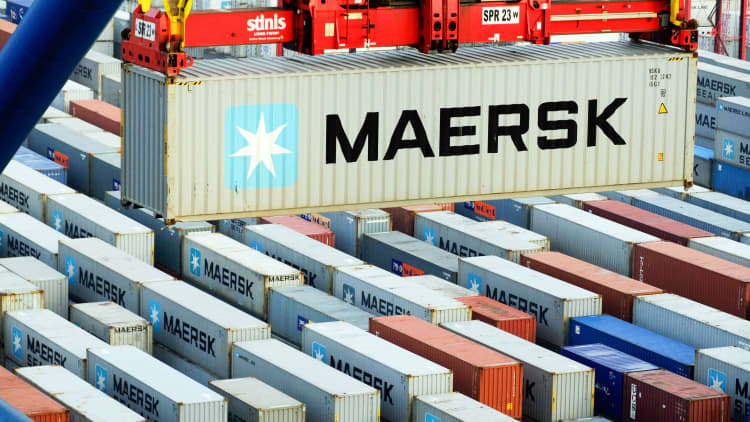
By Courtney Cook, Director of Marketing at Evigence
In the world of food, the pursuit of freshness is a relentless journey. Whether you’re a dedicated foodie or someone simply looking to put a healthy meal on the table, the quality and freshness of your ingredients matter. Freshness, after all, is the essence of a delightful culinary experience.
Yet, managing fresh foods, from production to consumption, is no simple task. In this article, we’ll explore the intricacies of fresh food management and the challenges faced by Direct-to-Consumer (D2C) food brands and online grocers. We’ll also dive deeper into the astonishing statistics that reveal the true scale of the freshness challenge in today’s food industry.
The freshness conundrum
Fresh food management is a high-stakes game. Small variations in time and temperature exposure at any point along the cold chain can have a disproportionate impact on the freshness and remaining shelf life of food products. The cold chain, a crucial component of the supply chain responsible for handling temperature-sensitive, perishable goods, is where the battle for freshness is fought.
Imagine a carton of ripe strawberries, carefully plucked from a farm, passing through a series of stages before reaching your kitchen. It starts at the producer, moves to a processing facility, takes a ride in a refrigerated truck, and finally arrives at the retailer’s shelf. Each transition represents a potential pitfall where temperature fluctuations can compromise freshness.
The elusive freshness visibility
One of the most significant challenges faced by D2C food brands and online grocers is the lack of visibility into a food item’s actual remaining freshness. This invisibility stems from the inability to track and monitor the temperature and conditions that food products are exposed to during transit and storage.
Consider this: A consumer’s decision on where to buy food is heavily influenced by freshness. A remarkable 59% of consumers prioritize the quality of fresh offerings when making their purchasing decisions. However, this pursuit of freshness often leads to inconsistent experiences. Shoppers may find that what’s labeled as “fresh” doesn’t always live up to their expectations.
The freshness statistics that matter
To truly grasp the magnitude of the freshness challenge, let’s dive into some eye-opening statistics:
- Consumer prioritization: As mentioned earlier, 59% of consumers prioritize the quality of fresh offerings when choosing where to buy food. This underscores the immense value placed on freshness in the eyes of consumers.
- Profit wastage: Here’s a staggering fact – retailers waste twice the value of their profits due to the difficulty of managing fresh inventory. The intricacies of maintaining freshness from the distribution center to the store shelf contribute significantly to this wastage.
- Rejected food shipments: The freshness challenge doesn’t end at the store; it extends throughout the supply chain. Over 10% of fresh food shipments are rejected upon arrival at their destination due to inconsistent handling and temperature control in the supply chain.
These statistics paint a vivid picture of the hurdles faced by the food industry. The pursuit of freshness is not just a matter of culinary delight; it’s a matter of profitability and customer satisfaction.
The path forward: collaboration and innovation
The time has come for brands and retailers to look into and collaborate with a solution and technology that offers a true lifeline across the entire supply chain for fresh food management.
- Supply chain collaboration: Retailers, distributors, and logistics providers must work together to establish and maintain consistent cold chain protocols. This collaboration is essential for ensuring that freshness is preserved at every step of the supply chain.
- Data sharing: Transparency in data sharing is key. Real-time data on temperature, handling, and delivery conditions should be accessible to all stakeholders to make informed decisions and address issues proactively.
- Training and education: Proper training and education for personnel handling fresh foods are crucial. Understanding the significance of temperature control and the impact on freshness is a fundamental requirement.
- Consumer education: Educating consumers about the challenges of fresh food management and the efforts being made to address them can build trust and understanding. It helps consumers appreciate the complexities involved in delivering consistently fresh products.
The challenge of managing fresh foods in the modern food industry is undeniable. Temperature fluctuations, supply chain complexities, and consumer expectations all contribute to this multifaceted problem. However, with innovative technologies and a commitment to bring collaboration and transparency across the industry, we can begin to conquer the freshness challenge. In doing so, we not only meet consumer expectations but also drive profitability and sustainability in the world of fresh food.
 Courtney Cook is a seasoned marketing B2B leader with over a decade of experience in the SaaS, computer software, and technology industries, specializing in Oil and Gas, CPG, and Retail sectors. As the Director of Marketing at Evigence, she drives strategic marketing initiatives and leverages her expertise to propel the company to new heights.
Courtney Cook is a seasoned marketing B2B leader with over a decade of experience in the SaaS, computer software, and technology industries, specializing in Oil and Gas, CPG, and Retail sectors. As the Director of Marketing at Evigence, she drives strategic marketing initiatives and leverages her expertise to propel the company to new heights.

Credit: Source link






![[Guide] 5 Reasons Your Business Does or Doesn’t need an ESOP [Guide] 5 Reasons Your Business Does or Doesn’t need an ESOP](https://foodindustryexecutive.com/wp-content/uploads/2024/08/Food-Industry-Executive-696x457.png)








